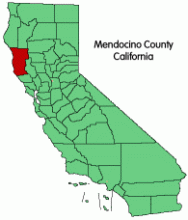Mendocino County Analyzes Losses From Communications Outage
In November, the Broadband Alliance of Mendocino County (BAMC) released a report documenting the results of an online survey to determine the effects of a summer communications outage. The Willits News reported that the survey revealed losses of over $215,000 in the county, although actual losses likely reach the millions.
In August, an accident wiped out Internet, telephone, cell, and 911 services for eight communities along the coast in Mendocino County. AT&T aerial fiber optic cable was destroyed. Approximately 17,400 people lost access to 911 services. Depending on the location, 911 service was out for 24 to 45 hours.
Only about 6.5 percent of the people in Mendocino County participated in the survey according to the report. Ninety-five percent of those responding said they were directly impacted.
The article quotes the BAMC report:
According to the BAMC, the outage was lengthy because "the AT&T backbone fiber network was not configured to be redundant nor diverse with protection routing. This was not due to the lack of fiber in the surrounding routes. AT&T did provide diverse fiber and protection for their cable station, but elected not to provide the same for the surrounding community and emergency services."
Mendocino County has been working for several years on an initiative to improve connectivity along California's north coast. They are now part of a larger collaboration called the North Bay/North Coast Broadband Consortium.
The incident in Mendocino County is much like a similar event in 2010 in which Cook and Lake Counties in Minnesota were cut off in the same way. At that time, a single Qwest line was cut and, since there was no redundancy, 911 service, Internet, and many business services came to a screeching halt.
Yet another reminder of the risks that come with depending on distant mega-corporations for essential infrastructure.



